How to install the app on iOS
Follow along with the video below to see how to install our site as a web app on your home screen.
Note: This feature may not be available in some browsers.
You are using an out of date browser. It may not display this or other websites correctly.
You should upgrade or use an alternative browser.
You should upgrade or use an alternative browser.
11 Arab Countries Take On NASA, Launch Own Space Program
- Thread starter Philip the Arab
- Start date
ArabianEmpires&Caliphates
SENIOR MEMBER

- Joined
- Aug 2, 2016
- Messages
- 2,377
- Reaction score
- 4
- Country
- Location
Yeah ok
and NASA supply’s all the parts
I know that trolling and PDF has become a widespread pandemic of late but I kindly recommend you to read this thread. You might actually gain some knowledge in the process.
Satellites of Saudi Arabia

Communication Arabsat
- Arabsat 1A, 1B, 1C [Spacebus-1000]
- Arabsat 1D [HS-376]
- Arabsat 1E [HS-376]
- Arabsat 2A, 2B [Spacebus-3000A]
- Arabsat 2C (Badr C) [HS-601HP]
- Arabsat 2D (Badr 2) [Eurostar-2000+]
- Arabsat 3A (Badr 3) [Spacebus-3000B2]
- Arabsat 4A, 4AR, 4B (Badr 1, 6, 4) [Eurostar-2000+]
- Arabsat 5A [Eurostar-3000]
- Arabsat 5B (Badr 5) [Eurostar-3000]
- Arabsat 5C [Eurostar-3000]
- Arabsat 6A [LM-2100]
- Arabsat 6B (Badr 7) [Eurostar-3000]
- Arabsat 6D
- Arabsat 6E
Earth Observation KACST
Science, Technology & Education General / Multi discipline
https://space.skyrocket.de/directories/sat_c_saudiarabia.htm
https://space.skyrocket.de/directories/sat_c.htm
For those interested in seeing the number of Arab satellites in orbit or Arab satellites that were once in orbit many years/decades ago.
@The SC
Do you agree with what some highly respected Arab contributors online are saying about KSA's most likely existing ability (de facto) to put a satellite into space using our existing ballistic missiles and existing missile force (RSSMF) courtesy of the Chinese, Ukrainian and most likely Pakistani cooperation? What is holding the leadership back, you think? Possible political pressure, can't think of anything else, given the secrecy of our ballistic missile program and already existing arsenal.
Saudi Arabia to launch 16th satellite into space

1 / 3
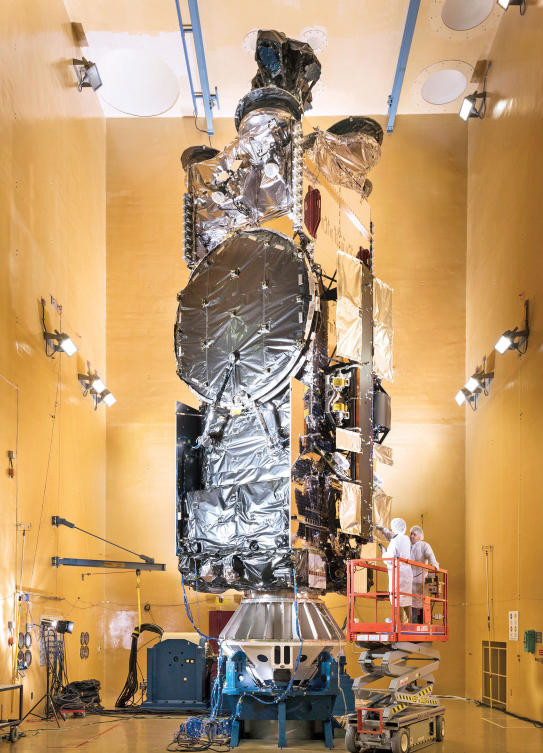
2 / 3

3 / 3
Updated 06 February 2019
RUBA OBAID
AMEERA ABID
DEEMA AL-KHUDAIR
February 05, 2019 01:27
- King Abdul Aziz City for Science and Technology, Lockheed Martin collaborated to manufacture SGS-1
It will provide telecommunications capabilities, stronger internet connectivity, TV and secure communications in the Middle East, North Africa and Europe.
Developed by a team from King Abdul Aziz City for Science and Technology (KACST), it will be launched in French Guiana by Arianespace, which provides launch services for all types of satellites.

KACST, a government institution that supports and enhances applied research, collaborated with Lockheed Martin to manufacture the SGS-1.
The institution has so far launched 15 satellites into the low Earth orbit, said the SGS-1 program director from KACST, Dr. Badr Al-Suwaidan.
KACST has collaborated with China in the Chang’e 4 mission to explore the far side of the moon; provided advanced services for remote-sensing systems; and participated in the launch of an advanced system for maritime monitoring and tracking with satellite data, which includes daily coverage of 30,000 vessels worldwide.
Lockheed Martin is a global security and aerospace company that is engaged in the research, design, development, manufacture, integration and sustainment of advanced technology systems and services. Its relationship with Saudi Arabia began in 1965.
“Our goal is to deliver advanced technology and security solutions to the Saudi government and commercial sector in support of Vision 2030,” said Chief Executive for Lockheed Martin Saudi Arabia Joseph Rank.
The SGS-1 was manufactured, tested and operated with the participation of Saudi engineers and scientists.
The agreement of the launch service between Arianespace, Arabsat and KACST was announced in 2015.
In 2018, Saudi Crown Prince Mohammed bin Salman oversaw manufacturing stages during his visit to Lockheed Martin’s San Francisco headquarters.
During this visit, the crown prince signed the final piece that was to be placed on the SGS-1 before its launch, with the words: “Above the highest clouds.”
The satellite will be launched by the Guiana Space Centre, which is located in French Guiana because it is near the equator; it has a small population; and it is not prone to natural disasters. The vehicle that will launch the satellite is the European Ariane 5.
The SGS-1 “provides secure satellite communication on the Ka-band for the government of Saudi Arabia. It provides 35 gigabits per second,” said Al-Suwaidan, hailing “a new era.”
The Ka-band allows for higher bandwidth communication, supporting greater frequency reuse in geographically isolated spots.
Spot beams are satellite signals that are concentrated in power so that they cover a limited geographic area.
Spot beams are used so that only Earth-based stations in a particular area can properly receive the satellite signal.
“The program includes technology transfer for more than 15 engineers trained and certified by the manufacturer Lockheed Martin,” said Al-Suwaidan.
There will be more “space achievements under the new Saudi space authorities,” and under “the leadership of the first Arab astronaut, Prince Sultan bin Salman,” Al-Suwaidan added.
The SGS-1 was assembled at Lockheed Martin’s facilities in Denver, Colorado and Sunnyvale, California. In Sunnyvale, it underwent critical environmental testing.
“We had a very accommodating and smooth launch campaign thanks to the team from KACST, Arabsat and Lockheed Martin. We’re ready for the launch,” said Al-Suwaidan. “We’re grateful for the collaboration and service provided by Arianespace.”
The SGS-1 will be the 46th Lockheed Martin satellite to be launched by Arianespace. The launcher’s main stage will splash down in the Gulf of Guinea.
Thierry Fahem, the SGS-1 program director from Arianespace, wished the satellite “a long life.”
https://www.arabnews.com/node/1447201/saudi-arabia
Saudi Arabia’s Arabsat 6A Satellite Successfully Launched from Florida
Arabsat 6A is a high-capacity telecommunications satellite that will deliver television, radio, Internet, and mobile communications to customers in the Middle East, Africa, and Europe
Dr. Shaul Shay | 14/04/2019

Send to a friend
A+A-Size
Share on
Share on

A SpaceX Falcon Heavy rocket carrying the Arabsat 6A satellite lifts off from Cape Canaveral (Photo: AP)
Saudi Arabia has launched Arabsat 6A telecommunications satellite on April 12, 2019. The satellite was launched on board a SpaceX Falcon Heavy rocket from NASA’s Kennedy Space Station in Florida.
The Lockheed Martin-built Arabsat 6A Satellite is a high-capacity telecommunications satellite that will deliver television, radio, Internet, and mobile communications to customers in the Middle East, Africa, and Europe.
Saudi Arabia has boosted efforts to expand its space program through the King Abdulaziz City for Science and Technology (KACST). Riyadh has long-term space ambitions and relies on the support of the United States, France, China, and Russia.
The SGS-1
The first Saudi satellite for communications (SGS-1) was launched On February 5, 2019. The operation was carried out by Arianespace.The satellite was launched from the Guiana Space Center on an Ariane 5 rocket, which also carried into orbit the GSAT-31 satellite for the Indian Space Research Organization (ISRO), as well as the Hellas Sat 4 (HS-4). GSAT-31 and SGS-1-HS-4 are designed to operate for at least 15 years, Arianespace representatives said.
A team from the King Abdulaziz City for Science and Technology developed the satellite in collaboration with Lockheed Martin. The SGS-1, which is the first satellite of its kind to be owned by the Kingdom, was developed to provide secure communications, internet connectivity and television signal across the region.
The Saudi communications satellite employs hybrid (electric and chemical) propelling systems which have helped to reduce the satellite’s weight while increasing its life expectancy. It weighs 6.5 tons and has a life expectancy of over 20 years. It also uses advanced technologies enabling it to provide highly secured and anti-interference telecommunications.
Executive Vice President of Lockheed Martin International, Richard Edwards, lauded his company’s strategic partnership with Riyadh, saying: “The successful launch is a first step in our unique partnership with KACST and Saudi Arabia, which is established on innovation, science, technology and human resources development.”
Sat 5A and Sat 5B
On December 7, 2018, the King Abdulaziz City for Science and Technology announced the successful launch of the Saudi Sat 5A and Saudi Sat 5B satellites on board the Long March 2D space rocket from the Jiuquan Satellite Launch Center of the People’s Republic of China.
The two satellites provide government agencies with high-resolution satellite images similar to those in developed countries for use in various fields. The two satellites are managed and operated from an advanced control station located at the KACST headquarters.
Saudi expertise and competencies working in the field of satellite industry and development manufactured and tested the two high-accuracy remote-sensing reconnaissance satellites in accordance with the international standards in KACST laboratories.
Summary
The launch of the new satellite comes as part of the Kingdom’s Vision 2030 aiming to localize strategic technologies. The Kingdom seeks, through the space and aeronautical technology program, to achieve regional leadership in this vital sector relying on its preeminent position and vital capabilities that will allow the country to obtain its objective.
The Saudi Arabian Vision 2030 is the roadmap for this effort, and creating a high-technology research and industrial sector – such as space and satellite programs – is an important priority for Riyadh.
King Abdulaziz City for Science and Technology has already launched 16 Saudi satellites between 2000 and 2019. It also participated in the implementation of scientific experiments in outer space in cooperation with the US space agency (NASA) and Stanford University on board the satellite Saudi Sat 4 in 2014. KACST also participated in the exploration mission of “Changi 4” Satellite with China.
[Sources: Arab News, The National, Space.com, Asharq Al Awsat, Al Arabiya]
https://www.israeldefense.co.il/en/node/38128
I know that the leadership does not want to risk alienating superpowers and turning into a sanctioned/pariah state but at times I would like that just for the sake of a more "bombastic/public" display of strategic weapons and projects. Everything is so secretive. Rightfully so but you get the point.
Last edited:
The SC
ELITE MEMBER

- Joined
- Feb 13, 2012
- Messages
- 32,229
- Reaction score
- 21
- Country
- Location
This s what KSA is working on with Ukraine.. The full TOT has ben done alreadyI know that trolling and PDF has become a widespread pandemic of late but I kindly recommend you to read this thread. You might actually gain some knowledge in the process.
Satellites of Saudi Arabia
Satellites of Saudi Arabia
Communication Arabsat
KACST Space Research Institute
- Arabsat 1A, 1B, 1C [Spacebus-1000]
- Arabsat 1D [HS-376]
- Arabsat 1E [HS-376]
- Arabsat 2A, 2B [Spacebus-3000A]
- Arabsat 2C (Badr C) [HS-601HP]
- Arabsat 2D (Badr 2) [Eurostar-2000+]
- Arabsat 3A (Badr 3) [Spacebus-3000B2]
- Arabsat 4A, 4AR, 4B (Badr 1, 6, 4) [Eurostar-2000+]
- Arabsat 5A [Eurostar-3000]
- Arabsat 5B (Badr 5) [Eurostar-3000]
- Arabsat 5C [Eurostar-3000]
- Arabsat 6A [LM-2100]
- Arabsat 6B (Badr 7) [Eurostar-3000]
- Arabsat 6D
- Arabsat 6E
Earth Observation KACST
Science, Technology & Education General / Multi discipline
https://space.skyrocket.de/directories/sat_c_saudiarabia.htm
https://space.skyrocket.de/directories/sat_c.htm
For those interested in seeing the number of Arab satellites in orbit or Arab satellites that were once in orbit many years/decades ago.
@The SC
Do you agree with what some highly respected Arab contributors online are saying about KSA's most likely existing ability (de facto) to put a satellite into space using our existing ballistic missiles and existing missile force (RSSMF) courtesy of the Chinese, Ukrainian and most likely Pakistani cooperation? What is holding the leadership back, you think? Possible political pressure, can't think of anything else, given the secrecy of our ballistic missile program and already existing arsenal.
Saudi Arabia to launch 16th satellite into space

1 / 3

2 / 3

3 / 3
Updated 06 February 2019
RUBA OBAID
AMEERA ABID
DEEMA AL-KHUDAIR
February 05, 2019 01:27
JEDDAH: The Kingdom will launch its 16th satellite into space on Tuesday: The Saudi Geostationary Satellite 1 (SGS-1).
- King Abdul Aziz City for Science and Technology, Lockheed Martin collaborated to manufacture SGS-1
It will provide telecommunications capabilities, stronger internet connectivity, TV and secure communications in the Middle East, North Africa and Europe.
Developed by a team from King Abdul Aziz City for Science and Technology (KACST), it will be launched in French Guiana by Arianespace, which provides launch services for all types of satellites.
KACST, a government institution that supports and enhances applied research, collaborated with Lockheed Martin to manufacture the SGS-1.
The institution has so far launched 15 satellites into the low Earth orbit, said the SGS-1 program director from KACST, Dr. Badr Al-Suwaidan.
KACST has collaborated with China in the Chang’e 4 mission to explore the far side of the moon; provided advanced services for remote-sensing systems; and participated in the launch of an advanced system for maritime monitoring and tracking with satellite data, which includes daily coverage of 30,000 vessels worldwide.
Lockheed Martin is a global security and aerospace company that is engaged in the research, design, development, manufacture, integration and sustainment of advanced technology systems and services. Its relationship with Saudi Arabia began in 1965.
“Our goal is to deliver advanced technology and security solutions to the Saudi government and commercial sector in support of Vision 2030,” said Chief Executive for Lockheed Martin Saudi Arabia Joseph Rank.
The SGS-1 was manufactured, tested and operated with the participation of Saudi engineers and scientists.
The agreement of the launch service between Arianespace, Arabsat and KACST was announced in 2015.
In 2018, Saudi Crown Prince Mohammed bin Salman oversaw manufacturing stages during his visit to Lockheed Martin’s San Francisco headquarters.
During this visit, the crown prince signed the final piece that was to be placed on the SGS-1 before its launch, with the words: “Above the highest clouds.”
The satellite will be launched by the Guiana Space Centre, which is located in French Guiana because it is near the equator; it has a small population; and it is not prone to natural disasters. The vehicle that will launch the satellite is the European Ariane 5.
The SGS-1 “provides secure satellite communication on the Ka-band for the government of Saudi Arabia. It provides 35 gigabits per second,” said Al-Suwaidan, hailing “a new era.”
The Ka-band allows for higher bandwidth communication, supporting greater frequency reuse in geographically isolated spots.
Spot beams are satellite signals that are concentrated in power so that they cover a limited geographic area.
Spot beams are used so that only Earth-based stations in a particular area can properly receive the satellite signal.
“The program includes technology transfer for more than 15 engineers trained and certified by the manufacturer Lockheed Martin,” said Al-Suwaidan.
There will be more “space achievements under the new Saudi space authorities,” and under “the leadership of the first Arab astronaut, Prince Sultan bin Salman,” Al-Suwaidan added.
The SGS-1 was assembled at Lockheed Martin’s facilities in Denver, Colorado and Sunnyvale, California. In Sunnyvale, it underwent critical environmental testing.
“We had a very accommodating and smooth launch campaign thanks to the team from KACST, Arabsat and Lockheed Martin. We’re ready for the launch,” said Al-Suwaidan. “We’re grateful for the collaboration and service provided by Arianespace.”
The SGS-1 will be the 46th Lockheed Martin satellite to be launched by Arianespace. The launcher’s main stage will splash down in the Gulf of Guinea.
Thierry Fahem, the SGS-1 program director from Arianespace, wished the satellite “a long life.”
https://www.arabnews.com/node/1447201/saudi-arabia
Saudi Arabia’s Arabsat 6A Satellite Successfully Launched from Florida
Arabsat 6A is a high-capacity telecommunications satellite that will deliver television, radio, Internet, and mobile communications to customers in the Middle East, Africa, and Europe
Dr. Shaul Shay | 14/04/2019
Send to a friend
A+A-Size
Share on
Share on

A SpaceX Falcon Heavy rocket carrying the Arabsat 6A satellite lifts off from Cape Canaveral (Photo: AP)
Saudi Arabia has launched Arabsat 6A telecommunications satellite on April 12, 2019. The satellite was launched on board a SpaceX Falcon Heavy rocket from NASA’s Kennedy Space Station in Florida.
The Lockheed Martin-built Arabsat 6A Satellite is a high-capacity telecommunications satellite that will deliver television, radio, Internet, and mobile communications to customers in the Middle East, Africa, and Europe.
Saudi Arabia has boosted efforts to expand its space program through the King Abdulaziz City for Science and Technology (KACST). Riyadh has long-term space ambitions and relies on the support of the United States, France, China, and Russia.
The SGS-1
The first Saudi satellite for communications (SGS-1) was launched On February 5, 2019. The operation was carried out by Arianespace.The satellite was launched from the Guiana Space Center on an Ariane 5 rocket, which also carried into orbit the GSAT-31 satellite for the Indian Space Research Organization (ISRO), as well as the Hellas Sat 4 (HS-4). GSAT-31 and SGS-1-HS-4 are designed to operate for at least 15 years, Arianespace representatives said.
A team from the King Abdulaziz City for Science and Technology developed the satellite in collaboration with Lockheed Martin. The SGS-1, which is the first satellite of its kind to be owned by the Kingdom, was developed to provide secure communications, internet connectivity and television signal across the region.
The Saudi communications satellite employs hybrid (electric and chemical) propelling systems which have helped to reduce the satellite’s weight while increasing its life expectancy. It weighs 6.5 tons and has a life expectancy of over 20 years. It also uses advanced technologies enabling it to provide highly secured and anti-interference telecommunications.
Executive Vice President of Lockheed Martin International, Richard Edwards, lauded his company’s strategic partnership with Riyadh, saying: “The successful launch is a first step in our unique partnership with KACST and Saudi Arabia, which is established on innovation, science, technology and human resources development.”
Sat 5A and Sat 5B
On December 7, 2018, the King Abdulaziz City for Science and Technology announced the successful launch of the Saudi Sat 5A and Saudi Sat 5B satellites on board the Long March 2D space rocket from the Jiuquan Satellite Launch Center of the People’s Republic of China.
The two satellites provide government agencies with high-resolution satellite images similar to those in developed countries for use in various fields. The two satellites are managed and operated from an advanced control station located at the KACST headquarters.
Saudi expertise and competencies working in the field of satellite industry and development manufactured and tested the two high-accuracy remote-sensing reconnaissance satellites in accordance with the international standards in KACST laboratories.
Summary
The launch of the new satellite comes as part of the Kingdom’s Vision 2030 aiming to localize strategic technologies. The Kingdom seeks, through the space and aeronautical technology program, to achieve regional leadership in this vital sector relying on its preeminent position and vital capabilities that will allow the country to obtain its objective.
The Saudi Arabian Vision 2030 is the roadmap for this effort, and creating a high-technology research and industrial sector – such as space and satellite programs – is an important priority for Riyadh.
King Abdulaziz City for Science and Technology has already launched 16 Saudi satellites between 2000 and 2019. It also participated in the implementation of scientific experiments in outer space in cooperation with the US space agency (NASA) and Stanford University on board the satellite Saudi Sat 4 in 2014. KACST also participated in the exploration mission of “Changi 4” Satellite with China.
[Sources: Arab News, The National, Space.com, Asharq Al Awsat, Al Arabiya]
https://www.israeldefense.co.il/en/node/38128
I know that the leadership does not want to risk alienating superpowers and turning into a sanctioned/pariah state but at times I would like that just for the sake of a more "bombastic/public" display of strategic weapons and projects. Everything is so secretive. Rightfully so but you get the point.
Actual test facilities and experimental hardware point to a spacecraft that's much more fact than fiction.
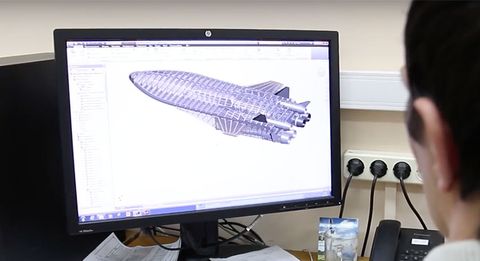
Of course, these images could be just a hypothetical picture on a computer screen, but the same presentation also shows active work at Ukrainian test facilities and even some experimental hardware, which was clearly related to the unusual space plane. This mysterious spacecraft is much more than just a simple brainstorming exercise.
The transfer of designs and the space complex of the Mayak-22 missile for the transfer of satellites and technical and tactical auxiliaries for its full launch.
Mayak family of orbital launch vehicles

Ukrainian orbital launch vehicle. New family of modular medium-sized launch vehicles
The Mayak launch vehicle family used common rocket engines, control and measurement systems, ground support equipment and other components based on a rational combination of technical solutions from both existing launch systems and those under development. Application of proven industrial processes and operation technologies would assure high reliability, safety and competitive cost for the entire transportation system in the global launch services market. The Mayak launch vehicle family was designed basing on the existing Zenit- and Tsyklon-type launch vehicles. The main vehicles in the family (Mayak-12 Mayak-22 and Mayak-23) were designed to be tandem rockets. Adding strap-on boosters to these launch vehicles could expand the family.
All stages used liquid oxygen/kerosene propellants. Evidently tankage and tooling for the Tsyklon and Zenit booster series were used. First stage engines were either versions of the RD-191/RD-180 family or new liquid oxygen/kerosene derivatives of storable propellant engines used on the R-36M missile series. Upper stage engine was evidently an improved version of the RD-58 used in the Zenit-3SL. Specifications were as follows:
- Mayak-12: 130 metric ton lift-off mass; 2 stages; 33.4 m long, 3.0 m in diameter; first stage thrust 176 metric tons, second stage thrust 9 metric tons.
- Mayak-22: 250 metric ton lift-off mass; 2 stages; 38.0 m long, 3.9 m in diameter; first stage thrust 352 metric tons, second stage thrust 9 metric tons.
- Mayak-23: 320 metric ton lift-off mass; 3 stages; 46.4 m long, 3.9 m in diameter; first stage thrust 440 metric tons, second stage thrust 101 metric tons, third stage thrust 9 metric tons.
Last edited:
Corruptistan
FULL MEMBER

- Joined
- May 28, 2022
- Messages
- 1,475
- Reaction score
- 0
- Country
- Location
So I was doing a bit of researching lately on PDF and I was trying to find out whether there is a joint Arab Space Program and what I found was this thread.
Are there any specific separate threads about the space programs/plans of Arab country x or y instead of this thread? I mean separate thread where you can see what each Arab country is doing?
Some recent news:

 www.arabnews.com
www.arabnews.com
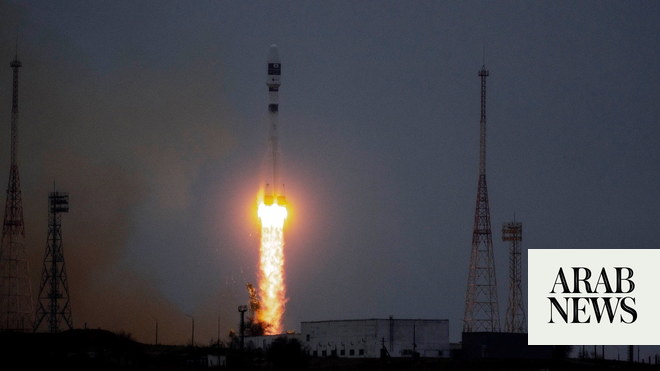
 www.arabnews.com
www.arabnews.com
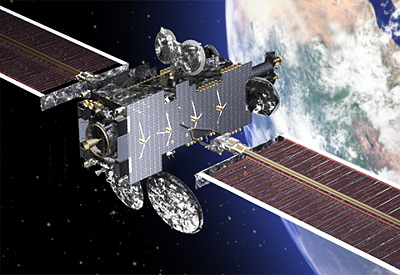
 spacewatch.global
spacewatch.global

 www.middleeasteye.net
www.middleeasteye.net
Published: MAY 1, 2022 04:13
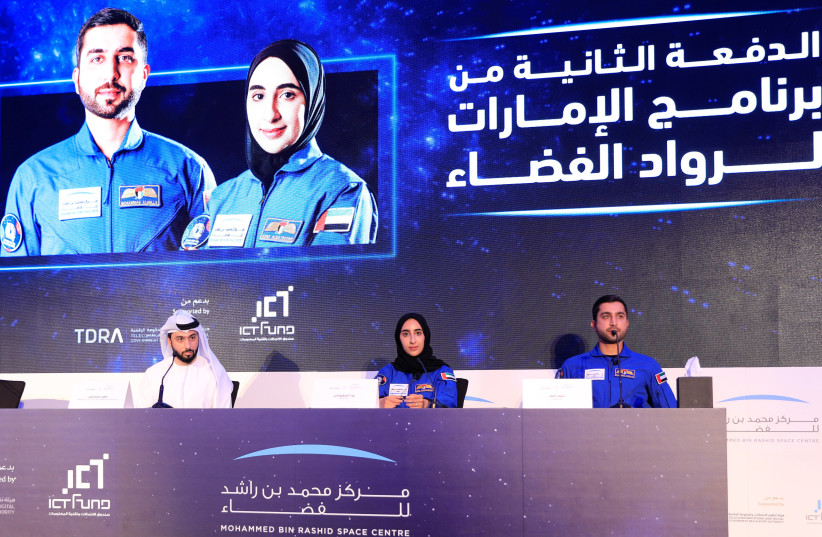
Nora al-Matrooshi, 28, member of the UAE's astronaut programme and the first female Arab astronaut looks on during a press conference in Dubai, United Arab Emirates, July 7, 2021
(photo credit: Rula Rouhana/Reuters)

 www.jpost.com
www.jpost.com
@The SC @Philip the Arab
Is there a Twitter account where one can follow Arab Space developments?
Are there any specific separate threads about the space programs/plans of Arab country x or y instead of this thread? I mean separate thread where you can see what each Arab country is doing?
Some recent news:
Saudi space agency training program ready for liftoff

Saudi space agency training program ready for liftoff
RIYADH: The Saudi Space Commission will launch a major training initiative aimed at new graduates seeking careers in the space sector. As part of the Madar program, theoretical and practical courses will be offered to 1,000 male and female trainees from various scientific specialties. The...
 www.arabnews.com
www.arabnews.com
Saudi Arabia launches two locally made satellites

Saudi Arabia launches two locally made satellites
JEDDAH: Saudi Arabia on Monday launched two satellites, including the first one to be launched by a local university, the Saudi Press Agency reported. Shaheen Sat 17, from King Abdul Aziz City for Science and Technology (KACST), and CubeSat, from King Saud University (KSU), were launched from...
 www.arabnews.com
www.arabnews.com
Saudi Arabia Launches Its 17th Satellite, Leading Arab World in Space Sector
Lockheed Martin, Arabsat, and KACST complete technical review of ARABSAT-6 and SaudiGeoSat-1

Lockheed Martin, Arabsat, and KACST complete technical review of ARABSAT-6 and SaudiGeoSat-1 - SpaceWatch.Global
Lockheed Martin, Arab Satellite Communications Organization (Arabsat), and King Abdulaziz City for S
'Investment and ambition': A history of Middle Eastern space exploration

'Investment and ambition': A history of Middle Eastern space exploration
The arrival of the UAE's Amal probe into Mars' orbit comes after a long and mixed legacy for the region's space operations
 www.middleeasteye.net
www.middleeasteye.net
UAE to be first Arab state to send astronaut on long-term space mission
The UAE and Axiom Space signed an agreement at the UAE's embassy in Washington, DC on Wednesday.
By TZVI JOFFREPublished: MAY 1, 2022 04:13
Nora al-Matrooshi, 28, member of the UAE's astronaut programme and the first female Arab astronaut looks on during a press conference in Dubai, United Arab Emirates, July 7, 2021
(photo credit: Rula Rouhana/Reuters)
UAE to be first Arab state to send astronaut on long-term space mission
The UAE and Axiom Space signed an agreement at the UAE's embassy in Washington, DC on Wednesday.
@The SC @Philip the Arab
Is there a Twitter account where one can follow Arab Space developments?
Corruptistan
FULL MEMBER

- Joined
- May 28, 2022
- Messages
- 1,475
- Reaction score
- 0
- Country
- Location
March 4 2020
Under the leadership of the King's second son, the Saudi kingdom aims to set up various satellite and micro launcher manufacturing facilities within its territory
Juan Pons

PHOTO/SSC - Prince Sultan was the first astronaut from an Arab country, the first Muslim male, the first member of a royal family and the youngest astronaut to travel into space
It intends to diversify its economy and create a scientific, legislative and technical environment in view of the growing business opportunities offered by space. The Saudi Space Agency is already a reality. Its formal launch took place last week with the constitution and first meeting of its Board of Directors under the chairmanship of Prince Sultan bin Salman bin Abdulaziz Al Saud, who in 1985 and at the age of 28 became the first Arab, the first Muslim and the first member of a royal family to travel into space.
In his inaugural session on 24 February, Prince Sultan - who is so far the only astronaut in the Kingdom - wanted to make it clear that the officially named Saudi Space Commission or SSC will be "the main umbrella organiser of everything related to the space sector".
 PHOTO/NASA - Fourth from left, Prince Sultan poses with the crew of the STS-51-G mission, which took off on June 17, 1985 aboard NASA's space shuttle Discovery
PHOTO/NASA - Fourth from left, Prince Sultan poses with the crew of the STS-51-G mission, which took off on June 17, 1985 aboard NASA's space shuttle Discovery
Before his most direct collaborators, the second son of HM King Salman bin Addulaziz Al Saud - the reigning monarch - Prince Sultan wanted to emphasise the need to have a strong national agency "to regulate the sector in the Kingdom and improve its opportunities for growth", while stressing the importance of space "in the economic, scientific and strategic fields" to offer "a promising future for Saudi citizens, to encourage the participation of the private sector and to favour the integration of state institutions".
By giving the green light to the SSC and like many other countries, the Riyadh authorities aim to direct and coordinate their national efforts beyond satellite communications, while expressing their desire to become a globally important player in the framework of outer space.
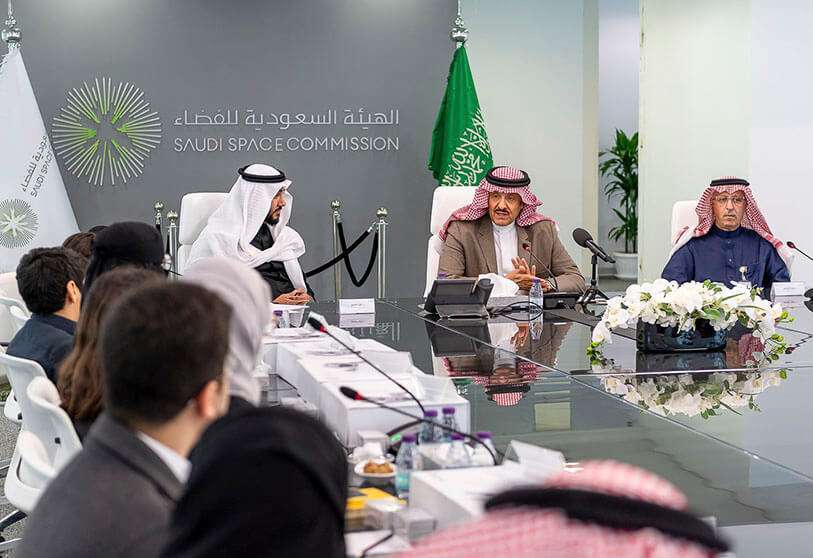 PHOTO/NASA - The Ajyal Space Generations Program dedicated to train the new generations and turn them "into space engineers and scientists", has an Advisory Council composed of young people and adults
PHOTO/NASA - The Ajyal Space Generations Program dedicated to train the new generations and turn them "into space engineers and scientists", has an Advisory Council composed of young people and adults
They are interested, for example, in developing low-cost satellite launch and manufacturing systems, which are conducive to the creation of a high-tech industrial and research sector that will contribute to the development of their Vision 2030 Plan. This Plan is of primary importance for the country's future as it is the road map for reducing Saudi Arabia's dependence on oil, diversifying its economy and developing public service sectors such as health, education, infrastructure, tourism and entertainment.
Aware of its enormous current economic potential but also of its shortcomings, Prince Sultan encourages the formation of a varied network of partnerships at the international level, both with space agencies, private companies, universities and research centres in other countries. At the same time, they aim to attract investment from large corporations and Saudi SMEs to enter the global space market either alone or in joint cooperation.
Another of Prince Sultan's major concerns is to attract and train young Saudis in the field of science and technology studies, with the ultimate aim of training new astronauts to succeed him in reaching the Earth's orbit and beyond.
To achieve this, the so-called Space Generations Programme, or Ajyal, has been initiated, which aims to inspire new generations and turn them "into space engineers and scientists, a way of making their dreams come true," stresses the programme's director-general, Ilham Al-Harbi.
 PHOTO/Lockheed Martin Space - The latest Saudi communications satellite is huge, weighing 6,495 kilos at launch and was put into orbit on February 5, 2019
PHOTO/Lockheed Martin Space - The latest Saudi communications satellite is huge, weighing 6,495 kilos at launch and was put into orbit on February 5, 2019
A veteran astronaut
A Royal Order from King Salman bin Abdulaziz Al Saud dated 27 December 2018 stipulates the establishment of the Saudi Arabian Space Agency and appoints His Royal Highness Prince Sultan bin Abdulaziz Al Saud - formerly head of the Tourism and National Heritage Commission - as chairman of the board of directors with the rank of minister. The move is part of a major reorganization of the various portfolios of the Saudi government.
But it took 14 months to define the organizational structure of the SSC, change its name from Agency to Saudi Space Commission and appoint the remaining 11 members of the Board of Directors, including a woman, Rania Mahmoud Nashar, the top executive of Samba Financial Group, a large national bank.
At its first meeting a week ago, the SSC Board of Directors approved the National Space Strategy, a document whose content is not known, but which has been advised by international experts and is awaiting approval by the Council of Ministers.
 PHOTO/SSC - The Board of Directors of the Saudi Space Commission has 12 members, one of them a woman, under the presidency of the second son of the King
PHOTO/SSC - The Board of Directors of the Saudi Space Commission has 12 members, one of them a woman, under the presidency of the second son of the King
Its wording, "ambitious but realistic", Prince Sultan bin Salman says, has been agreed with representatives of the Ministry of Defence, other government agencies and KACST, the King Abdulaziz City of Science and Technology, the government scientific institution whose aim is to promote applied scientific research and which has so far been the main driving force behind the nation's space activities.
Since his appointment to head the Kingdom's space affairs, Prince Sultan has focused his efforts, meetings and negotiations both on the training of young Saudis and on strengthening international cooperation with the space institutions and agencies of other countries.
Prince Sultan was not only the first astronaut from an Arab country and the first Muslim man to travel into space. He was also the youngest human being to orbit the Earth. At only 28 years of age, he took off on June 17, 1985 on board NASA's space shuttle Discovery as a payload specialist, along with six other astronauts, five Americans - one of them a woman - and one Frenchman.
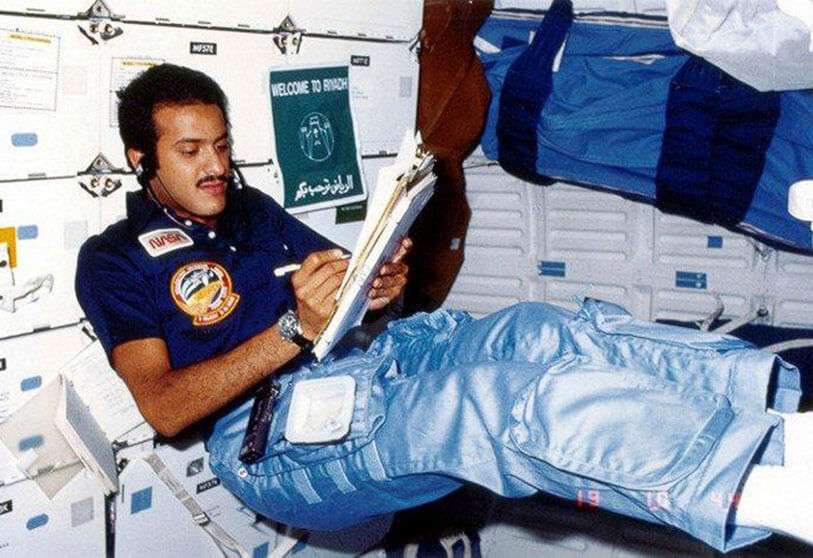 PHOTO/NASA - At 28 years old, Prince Sultan bin Salman bin Abdulaziz Al Saud stayed in orbit for 7 days
PHOTO/NASA - At 28 years old, Prince Sultan bin Salman bin Abdulaziz Al Saud stayed in orbit for 7 days
The seven astronauts were to carry out NASA's STS-51-G mission, whose main goal was to put three communications satellites into orbit: Mexico's Morelos, the AT&T corporation's Telstar 3D and the Arabsat-1B, the latter owned by the Arab Satellite Communications Organization (Arabsat), in which Saudi Arabia is the main shareholder. The shuttle Discovery returned to earth on 24 June with all its crew members safe and sound. Prince Sultan is not only a former astronaut but also a retired colonel from the Royal Saudi Arabian Air Force, with more than 5,000 flight hours to his credit.
Saudi Arabia is not a newcomer to the field of space and has repeatedly demonstrated its interest in entering space in its various aspects. It is a member of the UN Committee on the Peaceful Uses of Outer Space and has signed the five UN treaties and principles on outer space to promote the use of space technologies in different fields in the country.
 PHOTO/NASA - He flew into space as a payload specialist to facilitate the launch of the ArabSat-1B satellite
PHOTO/NASA - He flew into space as a payload specialist to facilitate the launch of the ArabSat-1B satellite
Cooperate with China, the United States, Russia and many other countries
It has signed or is about to sign a significant number of international joint cooperation agreements related to space exploration and research, the manufacture of communication and observation satellites, ground infrastructure and launch vehicles with Brazil, China, France, Germany, Greece, Russia, Ukraine and the United States. For example, it participates in the Chinese lunar space mission Chang'e-4, which was launched in May 2018 and carries advanced photographic systems developed in Saudi Arabia. Throughout 2019, Prince Sultan bin Salman bin Abdulaziz and his team have held numerous meetings with senior officials of the major space powers to further strengthen their international ties.
In Moscow and Riyadh, they met with the heads of the major Russian space companies and their authorities - for example, the Minister of Industry and Trade and the Director General of the Russian Federal Space Agency (Roscosmos), Dmitry Rogozin - in an effort to define the details of a programme of joint cooperation between the two nations in the fields of exploration, industry and space sciences.
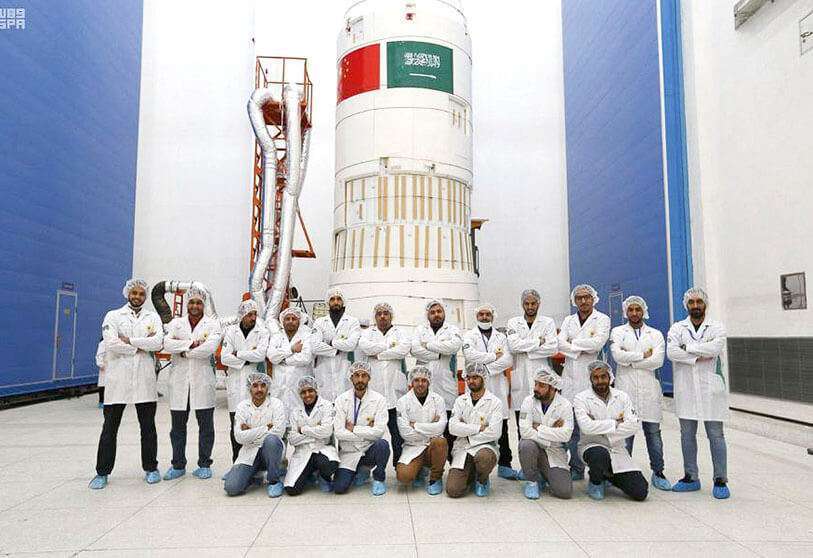 PHOTO/Xinhua – Saudi engineers pose in front of one of the satellites put into orbit by Chinese launchers
PHOTO/Xinhua – Saudi engineers pose in front of one of the satellites put into orbit by Chinese launchers
Over the past three months, talks have been held with senior South Korean authorities to look at the possibility of establishing joint cooperation agreements in the field of manufacturing high-resolution observation satellites and their applications. Also with the political authorities of Greece, to expand and strengthen cooperation between the two countries in the field of satellites and their applications.
The space cooperation between Riyadh and Athens goes back several years and takes the form of the Saudi Arabian communication satellite Geostationary Satellite 1/Hellas Sat 4, an original bilateral project between KACST and Hellas Sat, the Greek-Cypriot satellite communication operator subsidiary of ArabSat. With no less than 6,495 kilos of launch weight, the Greek-Saudi satellite was placed in space on 5 February 2019 by a European Ariane 5 launcher with the aim of providing television, Internet, telephone and secure communications services in the Ka and Ku bands to the Arab countries of the Middle East and the Persian Gulf, South Africa and Europe.
In December 2018, a Chinese 2D Long-Range rocket took off from the Jiuquan space base and launched the 425-kilogram SaudiSat 5A and SaudiSat 5B observation satellites into space. Its high-resolution images are processed and analyzed at the National Center for Remote Sensing Technology, a KACST agency, and are used for security, defense and civilian applications.
The Saudi Arabian kingdom has put more than twenty communications, observation and technological devices into orbit, either its own satellites or through communications platform operators of which it is the main shareholder.

 atalayar.com
atalayar.com
Nice 2.5 year old article giving a decent overview.
Looks like some recent deals (memorandums) where signed with Italy's Space Agency a few days ago.
Recent meetings with NASA.
Visiting NASA's Johnson Space Center in order to discuss opportunities for cooperation in the field of developing young talents and training astronauts.
It looks like the Saudi Arabian Space Commission is lead by visionary and talented locals. Prince Sultan (former astronaut) and the likes of Alswaha and Al-Tamimi.

 en.wikipedia.org
en.wikipedia.org
Saudi Arabia focuses its attention on the space sector within the framework of the Vision 2030 Plan
Under the leadership of the King's second son, the Saudi kingdom aims to set up various satellite and micro launcher manufacturing facilities within its territory
Juan Pons

PHOTO/SSC - Prince Sultan was the first astronaut from an Arab country, the first Muslim male, the first member of a royal family and the youngest astronaut to travel into space
It intends to diversify its economy and create a scientific, legislative and technical environment in view of the growing business opportunities offered by space. The Saudi Space Agency is already a reality. Its formal launch took place last week with the constitution and first meeting of its Board of Directors under the chairmanship of Prince Sultan bin Salman bin Abdulaziz Al Saud, who in 1985 and at the age of 28 became the first Arab, the first Muslim and the first member of a royal family to travel into space.
In his inaugural session on 24 February, Prince Sultan - who is so far the only astronaut in the Kingdom - wanted to make it clear that the officially named Saudi Space Commission or SSC will be "the main umbrella organiser of everything related to the space sector".

Before his most direct collaborators, the second son of HM King Salman bin Addulaziz Al Saud - the reigning monarch - Prince Sultan wanted to emphasise the need to have a strong national agency "to regulate the sector in the Kingdom and improve its opportunities for growth", while stressing the importance of space "in the economic, scientific and strategic fields" to offer "a promising future for Saudi citizens, to encourage the participation of the private sector and to favour the integration of state institutions".
By giving the green light to the SSC and like many other countries, the Riyadh authorities aim to direct and coordinate their national efforts beyond satellite communications, while expressing their desire to become a globally important player in the framework of outer space.

They are interested, for example, in developing low-cost satellite launch and manufacturing systems, which are conducive to the creation of a high-tech industrial and research sector that will contribute to the development of their Vision 2030 Plan. This Plan is of primary importance for the country's future as it is the road map for reducing Saudi Arabia's dependence on oil, diversifying its economy and developing public service sectors such as health, education, infrastructure, tourism and entertainment.
Aware of its enormous current economic potential but also of its shortcomings, Prince Sultan encourages the formation of a varied network of partnerships at the international level, both with space agencies, private companies, universities and research centres in other countries. At the same time, they aim to attract investment from large corporations and Saudi SMEs to enter the global space market either alone or in joint cooperation.
Another of Prince Sultan's major concerns is to attract and train young Saudis in the field of science and technology studies, with the ultimate aim of training new astronauts to succeed him in reaching the Earth's orbit and beyond.
To achieve this, the so-called Space Generations Programme, or Ajyal, has been initiated, which aims to inspire new generations and turn them "into space engineers and scientists, a way of making their dreams come true," stresses the programme's director-general, Ilham Al-Harbi.

A veteran astronaut
A Royal Order from King Salman bin Abdulaziz Al Saud dated 27 December 2018 stipulates the establishment of the Saudi Arabian Space Agency and appoints His Royal Highness Prince Sultan bin Abdulaziz Al Saud - formerly head of the Tourism and National Heritage Commission - as chairman of the board of directors with the rank of minister. The move is part of a major reorganization of the various portfolios of the Saudi government.
But it took 14 months to define the organizational structure of the SSC, change its name from Agency to Saudi Space Commission and appoint the remaining 11 members of the Board of Directors, including a woman, Rania Mahmoud Nashar, the top executive of Samba Financial Group, a large national bank.
At its first meeting a week ago, the SSC Board of Directors approved the National Space Strategy, a document whose content is not known, but which has been advised by international experts and is awaiting approval by the Council of Ministers.

Its wording, "ambitious but realistic", Prince Sultan bin Salman says, has been agreed with representatives of the Ministry of Defence, other government agencies and KACST, the King Abdulaziz City of Science and Technology, the government scientific institution whose aim is to promote applied scientific research and which has so far been the main driving force behind the nation's space activities.
Since his appointment to head the Kingdom's space affairs, Prince Sultan has focused his efforts, meetings and negotiations both on the training of young Saudis and on strengthening international cooperation with the space institutions and agencies of other countries.
Prince Sultan was not only the first astronaut from an Arab country and the first Muslim man to travel into space. He was also the youngest human being to orbit the Earth. At only 28 years of age, he took off on June 17, 1985 on board NASA's space shuttle Discovery as a payload specialist, along with six other astronauts, five Americans - one of them a woman - and one Frenchman.

The seven astronauts were to carry out NASA's STS-51-G mission, whose main goal was to put three communications satellites into orbit: Mexico's Morelos, the AT&T corporation's Telstar 3D and the Arabsat-1B, the latter owned by the Arab Satellite Communications Organization (Arabsat), in which Saudi Arabia is the main shareholder. The shuttle Discovery returned to earth on 24 June with all its crew members safe and sound. Prince Sultan is not only a former astronaut but also a retired colonel from the Royal Saudi Arabian Air Force, with more than 5,000 flight hours to his credit.
Saudi Arabia is not a newcomer to the field of space and has repeatedly demonstrated its interest in entering space in its various aspects. It is a member of the UN Committee on the Peaceful Uses of Outer Space and has signed the five UN treaties and principles on outer space to promote the use of space technologies in different fields in the country.

Cooperate with China, the United States, Russia and many other countries
It has signed or is about to sign a significant number of international joint cooperation agreements related to space exploration and research, the manufacture of communication and observation satellites, ground infrastructure and launch vehicles with Brazil, China, France, Germany, Greece, Russia, Ukraine and the United States. For example, it participates in the Chinese lunar space mission Chang'e-4, which was launched in May 2018 and carries advanced photographic systems developed in Saudi Arabia. Throughout 2019, Prince Sultan bin Salman bin Abdulaziz and his team have held numerous meetings with senior officials of the major space powers to further strengthen their international ties.
In Moscow and Riyadh, they met with the heads of the major Russian space companies and their authorities - for example, the Minister of Industry and Trade and the Director General of the Russian Federal Space Agency (Roscosmos), Dmitry Rogozin - in an effort to define the details of a programme of joint cooperation between the two nations in the fields of exploration, industry and space sciences.

Over the past three months, talks have been held with senior South Korean authorities to look at the possibility of establishing joint cooperation agreements in the field of manufacturing high-resolution observation satellites and their applications. Also with the political authorities of Greece, to expand and strengthen cooperation between the two countries in the field of satellites and their applications.
The space cooperation between Riyadh and Athens goes back several years and takes the form of the Saudi Arabian communication satellite Geostationary Satellite 1/Hellas Sat 4, an original bilateral project between KACST and Hellas Sat, the Greek-Cypriot satellite communication operator subsidiary of ArabSat. With no less than 6,495 kilos of launch weight, the Greek-Saudi satellite was placed in space on 5 February 2019 by a European Ariane 5 launcher with the aim of providing television, Internet, telephone and secure communications services in the Ka and Ku bands to the Arab countries of the Middle East and the Persian Gulf, South Africa and Europe.
In December 2018, a Chinese 2D Long-Range rocket took off from the Jiuquan space base and launched the 425-kilogram SaudiSat 5A and SaudiSat 5B observation satellites into space. Its high-resolution images are processed and analyzed at the National Center for Remote Sensing Technology, a KACST agency, and are used for security, defense and civilian applications.
The Saudi Arabian kingdom has put more than twenty communications, observation and technological devices into orbit, either its own satellites or through communications platform operators of which it is the main shareholder.

Saudi Arabia focuses its attention on the space sector within the framework of the Vision 2030 Plan
It intends to diversify its economy and create a scientific, legislative and technical environment in view of the growing business opportunities offered by s
 atalayar.com
atalayar.com
Nice 2.5 year old article giving a decent overview.
Looks like some recent deals (memorandums) where signed with Italy's Space Agency a few days ago.
Recent meetings with NASA.
Visiting NASA's Johnson Space Center in order to discuss opportunities for cooperation in the field of developing young talents and training astronauts.
It looks like the Saudi Arabian Space Commission is lead by visionary and talented locals. Prince Sultan (former astronaut) and the likes of Alswaha and Al-Tamimi.

Abdullah Alswaha - Wikipedia
Corruptistan
FULL MEMBER

- Joined
- May 28, 2022
- Messages
- 1,475
- Reaction score
- 0
- Country
- Location
Sinnerman108
ELITE MEMBER

- Joined
- Jul 20, 2009
- Messages
- 8,991
- Reaction score
- -3
- Country
- Location
I know that trolling and PDF has become a widespread pandemic of late but I kindly recommend you to read this thread. You might actually gain some knowledge in the process.
This has to do with the books.
literature in general and specifically religious books portray a larger than life image of "arabs"
all pious, all right, never wrong, absolute devout muslims etc etc etc.
However once I first landed, and saw Whoaaaaaa the Arab is smoking ....
a Few months later i found out, it isn't just tobacco they smoke ....
There is a contrast, and that is where the problem are,
and a result of this contrast, a lot of people when faced with reality tend to take the extreme view.
Hydration
FULL MEMBER

- Joined
- Feb 9, 2022
- Messages
- 1,439
- Reaction score
- 0
- Country
- Location
An accurate description of your mentalityThere is a contrast, and that is where the problem are,
and a result of this contrast, a lot of people when faced with reality tend to take the extreme view.
Corruptistan
FULL MEMBER

- Joined
- May 28, 2022
- Messages
- 1,475
- Reaction score
- 0
- Country
- Location
An accurate description of your mentality
Forget silly trolling and the trolling of some ignorant Pakistanis (tiny minority overall) with anti-Arab or inferiority complexes. Vast majority of Pakistanis have nothing but love or goodwill for Arabs whom we share ancient historical ties with (from the time of the IVC), religious, cultural, linguistic, ancestral and deep people to people relations.
Instead tell me about Egypt's space program?
Hydration
FULL MEMBER

- Joined
- Feb 9, 2022
- Messages
- 1,439
- Reaction score
- 0
- Country
- Location
I know about as much as you most projects are announced when they are starting the building phase or is mostly finished because the media here is useless
The video above is the end plan for 2050 the tweet is the start
The SC
ELITE MEMBER

- Joined
- Feb 13, 2012
- Messages
- 32,229
- Reaction score
- 21
- Country
- Location
People in the Arab world have gazed at the stars with curiosity and genius for centuries. The first observatory was built in the 8th century by Abbasid Caliph Al-Ma’mun ibn al-Rashid in Baghdad, and the Middle East remained a source of brilliantly inventive scholarship and scientific learning in astronomy throughout Europe’s Dark Ages. Along the way, Muslim scholars developed algebra and spherical trigonometry, both essential mathematical tools for understanding the motions of heavenly bodies, and they made crucial revisions to Ptolemy’s foundational calculations on planetary movements. Small wonder that at least 210 of the most easily seen stars have names derived from Arabic and that 27 craters on the moon are named for early Muslim astronomers.
https://arabcenterdc.org/resource/arab-space-programs-level-up/
The Kingdom of Saudi Arabia has signed the basic charter of the Arab Space Cooperation Group with the participation of 14 member states in a virtual meeting convened on Sunday at the headquarters of Saudi Space Commission (SSC) in Riyadh.
https://saudispace.gov.sa/en/news/saudi-arabia-signs-charter-of-arab-space-cooperation-group/
https://twitter.com/arabspacegroup
Corruptistan
FULL MEMBER

- Joined
- May 28, 2022
- Messages
- 1,475
- Reaction score
- 0
- Country
- Location
Astronomy actually originates from modern-day Iraq. Babylonian astronomy is the father of all modern astronomy.
The origins of Western astronomy can be found in Mesopotamia, and all Western efforts in the exact sciences are descendants in direct line from the work of the late Babylonian astronomers.[6]
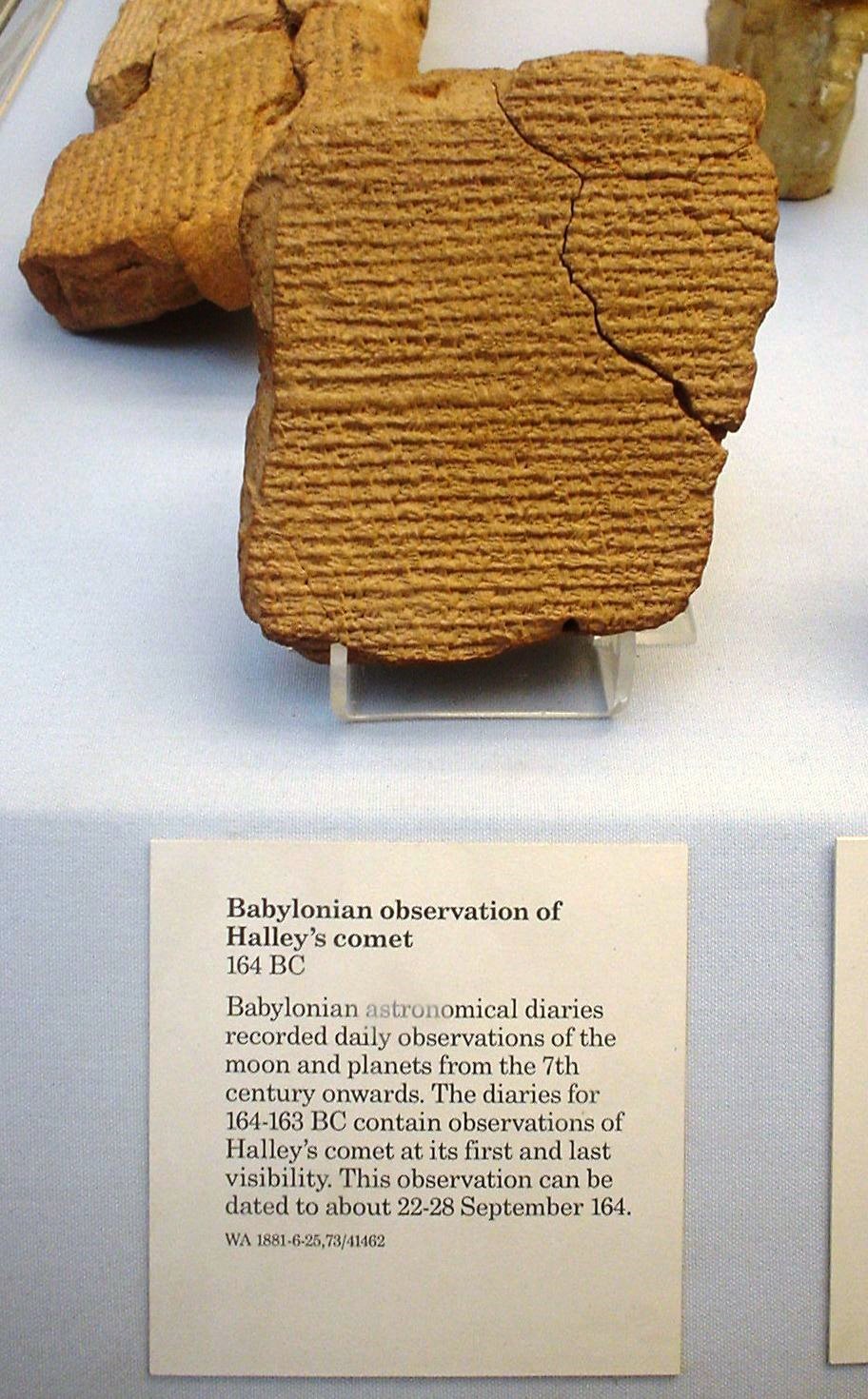
 en.wikipedia.org
en.wikipedia.org

 en.wikipedia.org
en.wikipedia.org
Peek Into Egypt’s Growing Capacity In Space And The Approved 10-year National Space Program
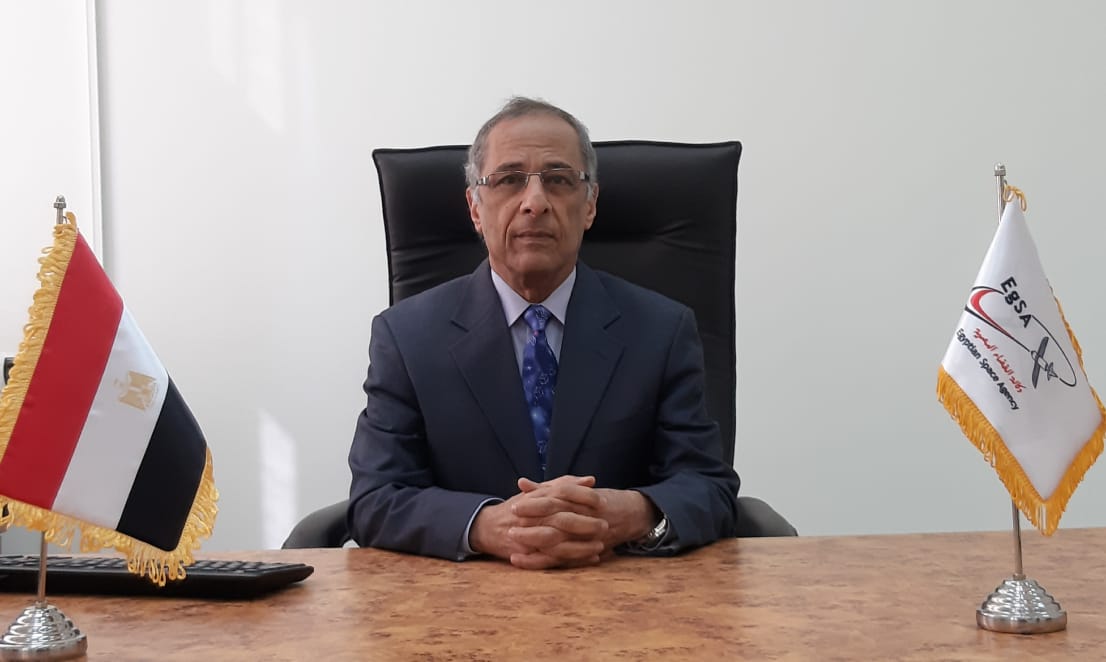
 africanews.space
africanews.space
The origins of Western astronomy can be found in Mesopotamia, and all Western efforts in the exact sciences are descendants in direct line from the work of the late Babylonian astronomers.[6]

Babylonian astronomy - Wikipedia

History of astronomy - Wikipedia
I know about as much as you most projects are announced when they are starting the building phase or is mostly finished because the media here is useless
The video above is the end plan for 2050 the tweet is the start
Peek Into Egypt’s Growing Capacity In Space And The Approved 10-year National Space Program

Peek Into Egypt's Growing Capacity In Space And The Approved 10-year National Space Program - Space in Africa
In 2019, Egypt hit several milestones in its space-faring ambition and set new records in Africa for launching four satellites into space – the highest number launched by an African nation in a calendar year – bringing the total number of satellites launched by the North African nation to nine...
 africanews.space
africanews.space
Corruptistan
FULL MEMBER

- Joined
- May 28, 2022
- Messages
- 1,475
- Reaction score
- 0
- Country
- Location
Very interesting tweets by Khalaf.
Last edited:
Corruptistan
FULL MEMBER

- Joined
- May 28, 2022
- Messages
- 1,475
- Reaction score
- 0
- Country
- Location
Corruptistan
FULL MEMBER

- Joined
- May 28, 2022
- Messages
- 1,475
- Reaction score
- 0
- Country
- Location
Important news:
- Saudi Arabia shows its intention to carry out peaceful activities in outer space ... with the Saudis thinking about the possibility of launching space missiles from their lands
- A number of space programs and strategies will be adopted soon
- Saudi Arabia shows its intention to carry out peaceful activities in outer space ... with the Saudis thinking about the possibility of launching space missiles from their lands
- A number of space programs and strategies will be adopted soon
Similar threads
- Replies
- 0
- Views
- 259
- Replies
- 0
- Views
- 476
- Replies
- 0
- Views
- 333
- Replies
- 1
- Views
- 396
- Replies
- 0
- Views
- 258
Latest posts
-
India launches missile attacks on Multiple locations in Pakistan,
- Latest: Danish saleem
-
PAF provides evidence of shooting down Indian Rafales
- Latest: lulldapull
-
-
Pakistan Affairs Latest Posts
-
India launches missile attacks on Multiple locations in Pakistan,
- Latest: Danish saleem
-
PAF provides evidence of shooting down Indian Rafales
- Latest: lulldapull
-

